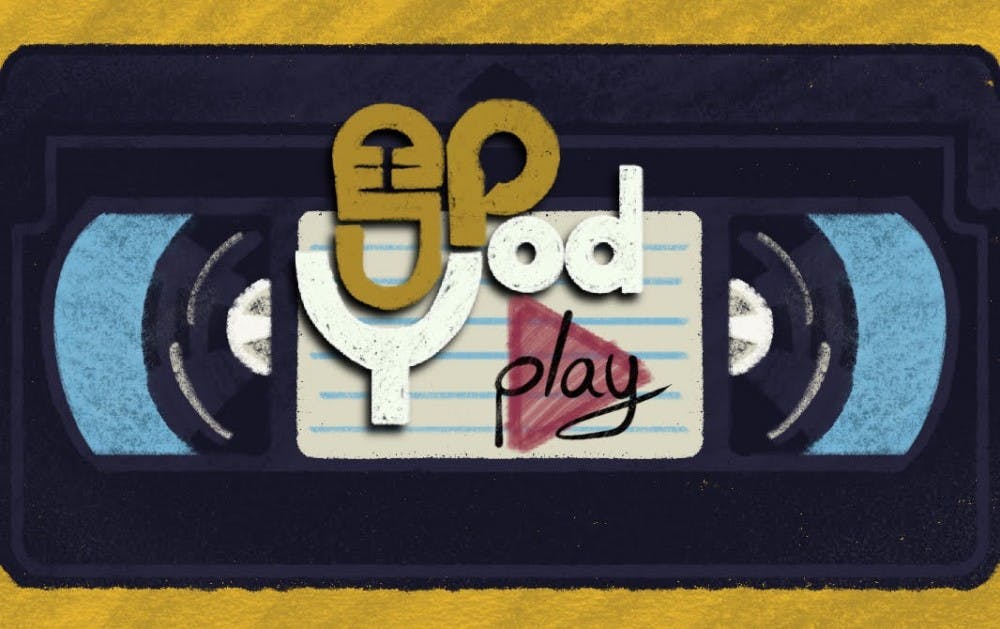Following the Cronkite School's announcement that it would house Indian Country Today's second newsroom on its fifth floor, podcaster Farah Eltohamy further discusses the issue of diversity in newsrooms and the other initiatives Cronkite is pursuing about it. In this episode, she interviews Indian Country Today Editor Mark Trahant and Cronkite Assistant Dean Rebecca Blatt.
Farah Eltohamy: Earlier this month, Indian Country Today announced it would open its second newsroom on the fifth floor of the Cronkite building. This initiative came after Dean Christopher Callahan wanted to include more Native American voices in the newsroom. One criticism of journalism as a field is the lack of diversity among staff and reporters. According to a study conducted by the Pew Research Center, newsrooms are less diverse than other job industries in the United States. Data was analyzed from 2012 to 2016, and it showed that 77% of newsroom employees were non-Hispanic white. Lack of representation not only leads to misrepresentation, but it the further perpetuation stereotypes towards racial and ethnic minorities.
Mark Trahant: My name is Mark Trahant, and I'm the editor of Indian Country Today.
Farah Eltohamy: Since you've been in journalism for quite a long time, can you explain to me how you've navigated through the newsroom as a Native American journalist and what made you want to pursue this career?
Mark Trahant: My career in journalism has just been extraordinary. I can't complain about it at all whether working for mainstream or for media focused on native audiences. I started as a kid. I was working for my tribal newspapers, the Sho-Ban News. Since then, I've worked for mostly Western newspapers, the Salt Lake Tribune, The Arizona Republic, The Seattle Times, The Seattle Post-Intelligencer and really in a variety of roles, from editor of the editorial page in Seattle to a reporter in Arizona.
I've noticed in terms of diversity, the challenges I think are greater now. The industry is under so much pressure financially that it really has put diversity at the back of the line. I think that's really unfortunate because one of the things we know about the demographics and the changing in this country is that this country is becoming more diverse, and journalism should be part of that in order to reflect the community. If you look at the numbers from the American Society of Newspaper Editors, their findings were that the number of Native Americans is about 0.3%, and yet Native Americans are about 2% of the population and 6% of Arizona residents.
I've really just been focused on Indian Country Today. I think what we have is an opportunity to change the national story. Having Native news front and center on a network will allow us to raise issues that we couldn't do before and so that really has been my focus.
For us, it came out of election night. We just had this amazing experience where more Native Americans were elected office than in any election previous. And we responded by having this broadcast, and we brought all these journalists together. It was something so special we thought, "Well, why not do this every day?"
That's led us to this next step with Cronkite was, "Let's figure out a way to do this every day." That's where we're at now.
Farah Eltohamy: What are your words of advice for student journalists who come from minority and marginalized groups on how to find their place in the newsroom if they feel like the newsroom isn't welcoming?
Mark Trahant: My advice on that is very specific. If a newsroom is not welcoming, invent your own. We're at this time where technology has so changed the landscape that you don't have to play by the old rules. That's exactly what we're doing in this sense. We're inventing our own. I think that's an opportunity across the board. Media is changing so dramatically and you can reach audiences in so many new ways. I think this is just a brilliant time to be an entry level journalist.
Farah Eltohamy: Now that I've talked to Indian Country Today, what about the Cronkite School and its push for diversity?
Rebecca Blatt: I'm Rebecca Blatt, I'm an assistant dean at the Cronkite School.
One of the things that I did when I first got to the Cronkite School, I was directing a program called the Public Insight Network Bureau which was working with newsrooms across the country who wanted to do a better job of engaging their communities. That was five years ago, and that was really coming at a time when newsrooms were realizing for a variety of reasons they needed to do a better job of really directly engaging people in their communities rather than simply relying on a previous model of "We produce content and other people receive it." (We're) really trying to engage different communities, and when you really do that, you realize how much diversity there is and you realize the imperative of trying to represent that and engage people in complicated issues.
Farah Eltohamy: You did mention the initiative that you started. What other initiatives does the Cronkite School have in store in order to combat the diversity issue?
Rebecca Blatt: For us, it starts with recruiting and engaging diverse students and faculty and staff. Like I was saying, it's really hard to have diverse perspectives if we don't have people in the building and in the school who represent lots of different communities. That's the first thing and really putting a lot of effort into creating pipelines with communities and schools in communities that traditionally have been left out of media or academia. That's that's one whole area – recruitment and retention and making sure that no matter who you are coming into the Cronkite School, we make sure that we're giving you the tools that you need to be successful and supporting you in that entire journey through the Cronkite School and beyond to make sure that you're going to be successful and comfortable and have the resources you need to do what you want to do coming out of here.
Recruitment and retention is one piece of it. Another piece of it is making sure that in the content that we create as a news organization, both with Cronkite News and with Arizona PBS, is inclusive and we have done that through a variety of ways. One of which is seeking out funding for specific professors of practice who can lead students in covering communities that often have been ignored by news media.
For example, through the Southwest Borderlands Initiative through ASU, we have received funding for four different Borderlands Initiative faculty members full-time for our faculty. Two of them (are) focusing specifically on the U.S.-Mexico border, Borderlands, and a new one is focusing on Native American communities and news media. One of the Borderlands Initiative professors is also working on bilingual reporting, so (we're) making sure that we have faculty who are leading teams producing content that is reflective of the Southwest and Arizona.
Then another thing is in terms of facilitating relationships nationally is being very active in national associations and organizations that are working to diversify the news market. For example, we have deep relationships with the Native American Journalists Association, and we're very active in both their educational outreach and then also conferences that they put on and making sure that we're leveraging all the resources we have to support what they're doing and to be able to engage them to support what we're doing.
This is the first year that NAJA has supported student chapters, so (we're) in the process of launching one of the first student chapters in the country. That serves a bunch of different purposes. One is through partnerships with NAJA. We can have an impact in how the industry works, who's in the industry. Then, in addition to that, student clubs can really serve a very vital role in creating community among students and providing support there. Having Native students who then have opportunities through NAJA who can get together with other Native students and mentors in the community, that's really important in their comfort here at the school, in the industry and ultimately their success in the field.
Farah Eltohamy: For The State Press, I'm Farah Eltohamy.
Editors Note: Mark Trahant stated that Native Americans make up 6% of the Arizona population. Native Americans make up 5.3% of the Arizona population.
Forks Estate: Periods and policies
State Press Play: How does Rami Malek's win impact Arab-Americans?
Forks Estate: The tea on the new Barrett fee
Reach the reporter at feltoham@asu.edu and on Twitter @farahelto.
Like State Press on Facebook and follow @statepress on Twitter.




